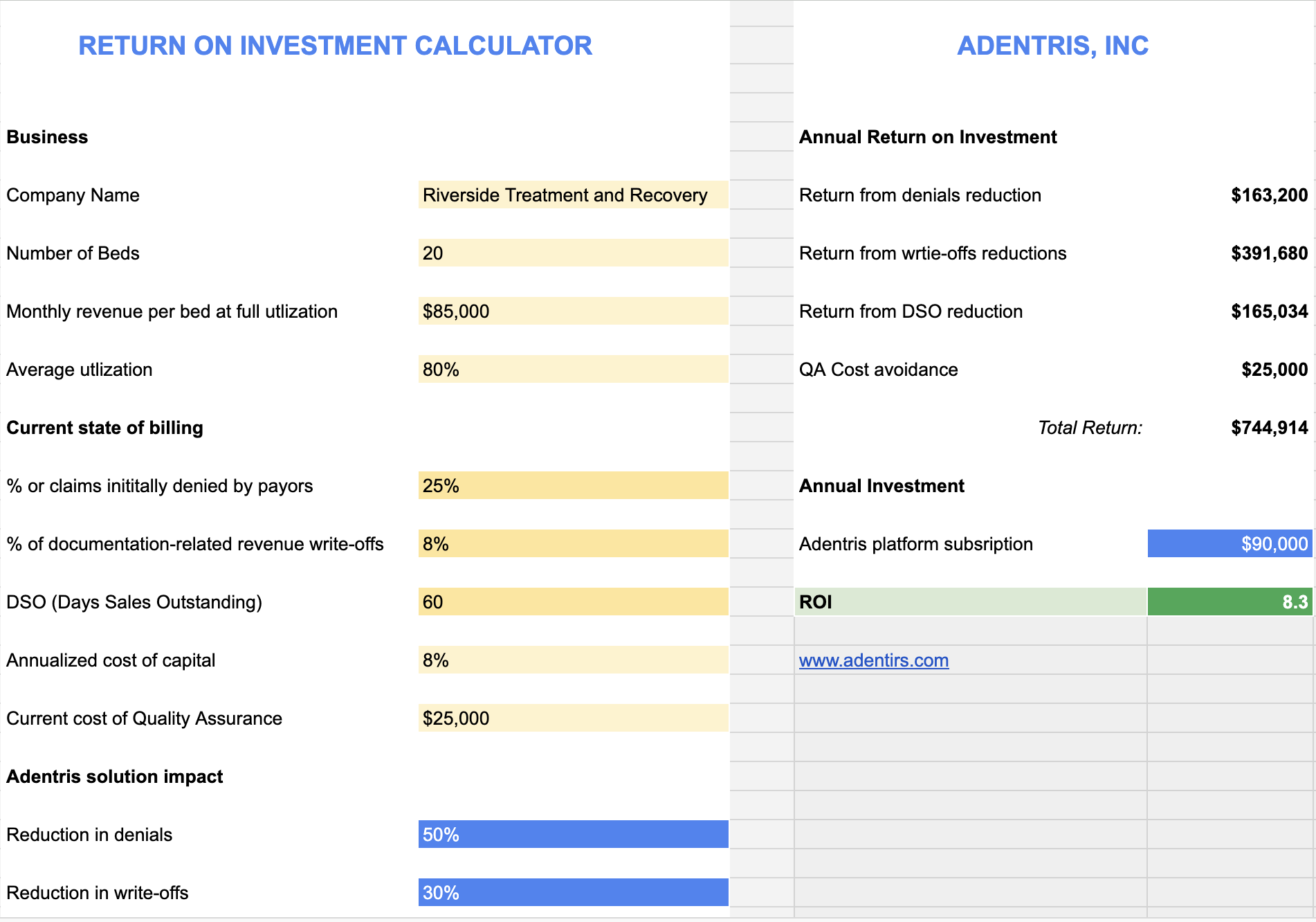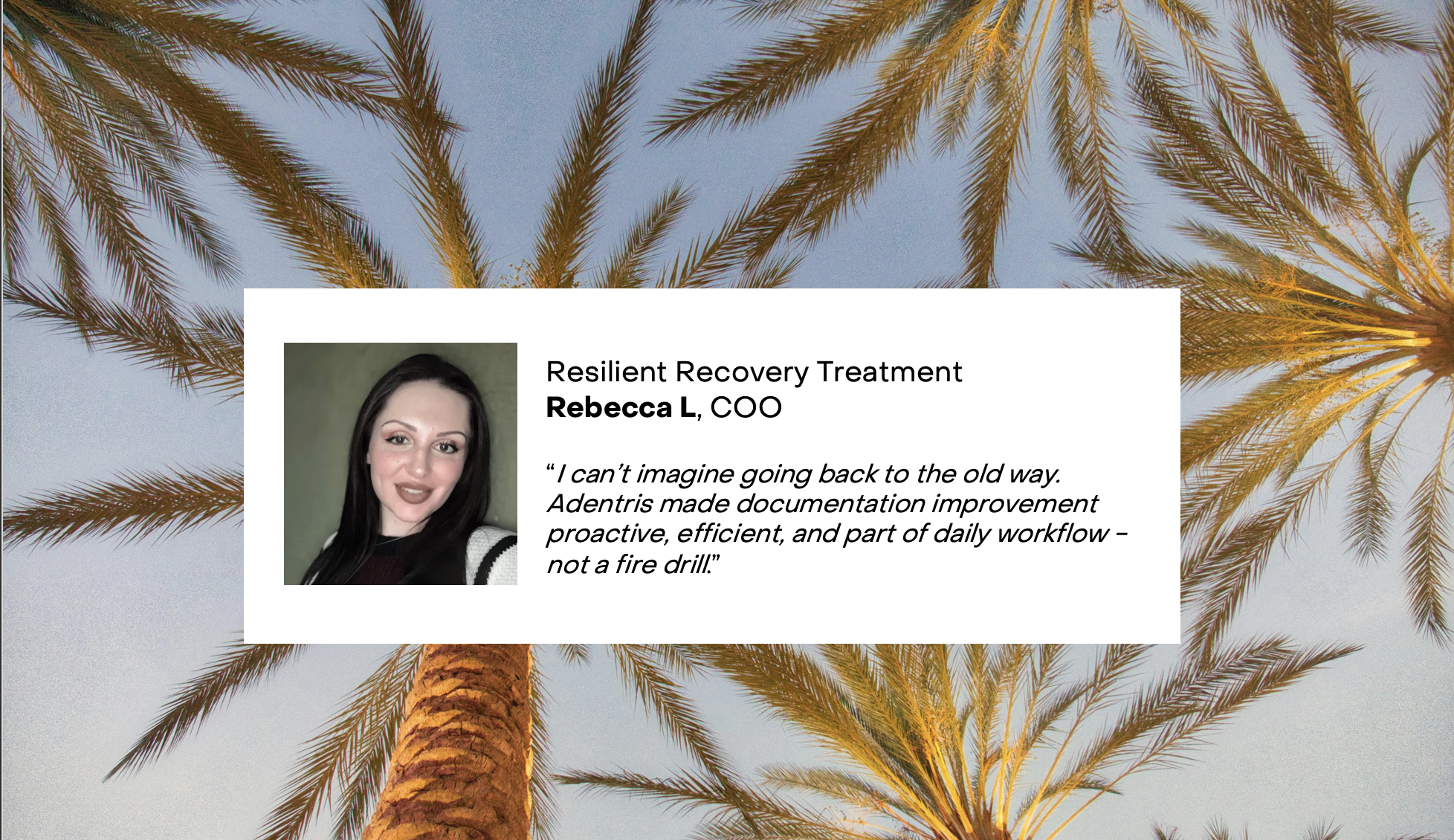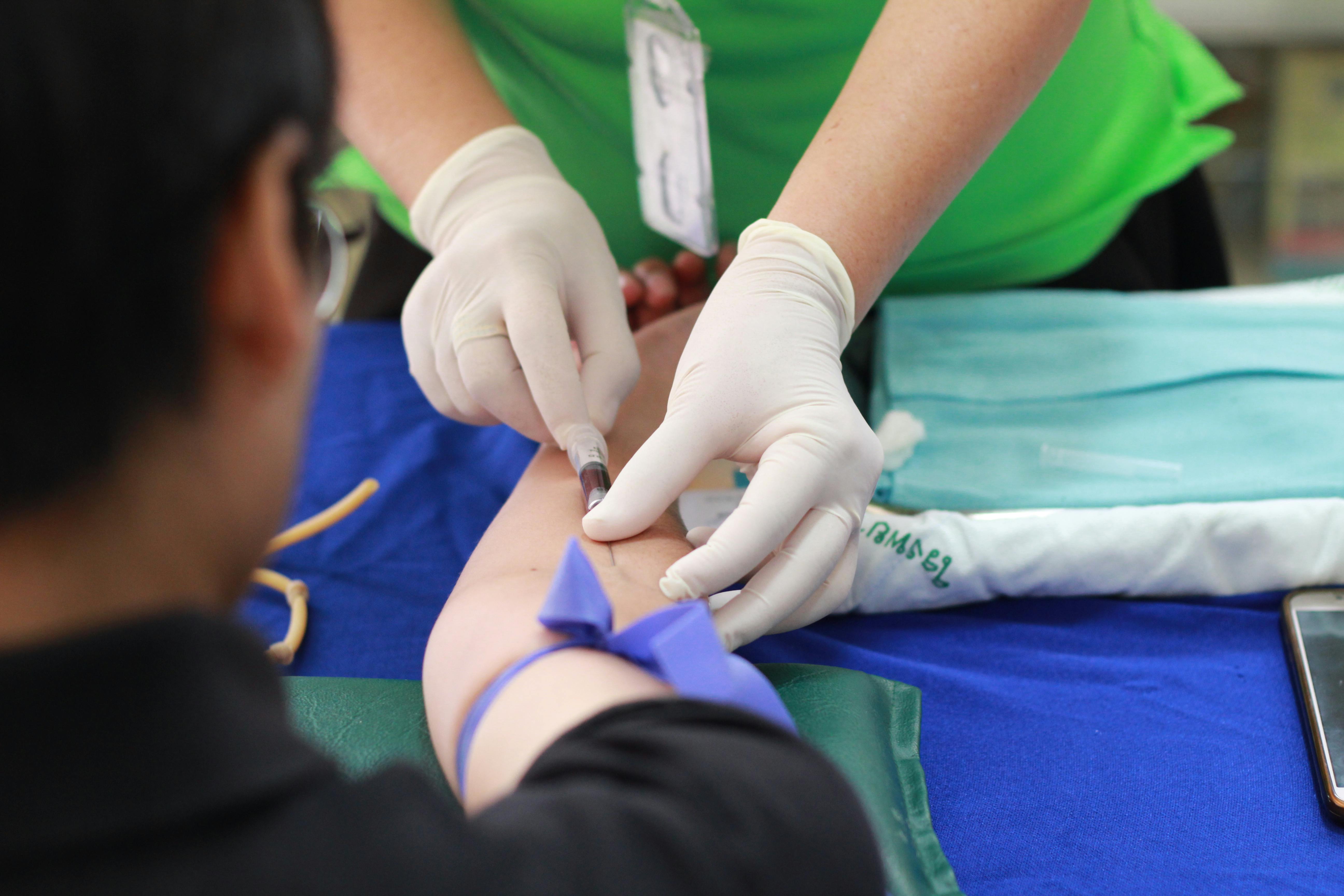Substance Use Disorder (SUD) treatment centers operate in one of the most complex billing and compliance environments in healthcare. Even small rehabs face constant challenges with claim denials, revenue write-offs, and delayed payments. Every missing note, inconsistent entry in the EMR, or delayed claim submission translates into lost revenue and financial stress.
At Adentris, we help SUD rehabs transform documentation quality into a revenue advantage. Our real-time AI audits of EMR data prevent mistakes before they reach payers, enabling centers to capture more of the revenue they have already earned. The impact can be quantified — and the numbers speak for themselves. Link to the calculator template>>
The Three Core ROI Drivers
Reduced Claim Denials
On average, 10–15% of behavioral health claims are denied, often due to preventable documentation gaps. By auditing charts in real time, Adentris ensures that missing or inconsistent fields are corrected before submission. This directly reduces the volume of denied claims and recovers revenue that would otherwise be lost.
Recovered Write-Offs
Even when claims are submitted, incomplete documentation often leads to partial write-offs: services delivered but not billable. Real-time quality checks ensure every therapy session, modifier, and compliance element is properly documented, turning lost dollars into collected revenue.
Accelerated Cash Flow
Clean claims get paid faster. By cutting 10–20 days from the typical payment cycle, rehabs improve their working capital position, reduce financing costs, and free up cash to reinvest in patient care.
ROI in Action: A 10-Bed Rehab Example
Let’s take a conservative case of a 10-bed residential SUD program with the following assumptions:
- 10 beds at 82% average utilization
- $94,000 monthly revenue per bed at full occupancy
- 15% of claims initially denied
- 9% of revenue lost to documentation write-offs
- Average Days Sales Outstanding (DSO): 64 days
- Annual cost of capital: 9%
- Current QA spend: $12,000 per year
- Adentris subscription: $54,000 per year
Step 1: Baseline Revenue
Gross Annual Revenue = 10 × 0.82 × 94,000 × 12 = $9.25 million
Step 2: Denial Recovery
15% of claims were denied before Adentris. With a 43% reduction in denials, the rehab recovers $53,694 annually.
Step 3: Write-Off Recovery
9% of revenue was lost due to write-offs. With a 36% reduction, the rehab recovers $296,357 annually.
Step 4: Payment Acceleration
Reducing DSO by more than half means cash arrives faster. At a 9% cost of capital, this translates to $79,318 in annual financial benefit.
Step 5: QA Cost Avoidance
By automating quality assurance, the rehab avoids $12,000 in annual manual QA costs.
Step 6: Total Return and ROI
Total Annual Return = $53,694 + $296,357 + $79,318 + $12,000 = $441,369
With a subscription cost of $54,000, the ROI multiple is:
$441,369 ÷ $54,000 = 8.2x
Why Even a 10-Bed Rehab Can Justify This Investment
Smaller facilities often assume advanced compliance and quality automation is only for large hospital systems. But as this 10-bed example shows, even modestly sized programs can achieve hundreds of thousands of dollars in recovered and accelerated revenue each year.
For small operators, every claim matters. Preventing a handful of denials or write-offs can swing the bottom line. Improving DSO strengthens liquidity, while automation reduces staff burden and costly manual rework.
In short: better documentation means better financial health. Adentris turns compliance from a cost center into a growth driver.
✅ If you’d like to see how Adentris can impact your center’s numbers, try our ROI calculator for SUD rehabs or reach out for a customized analysis.



